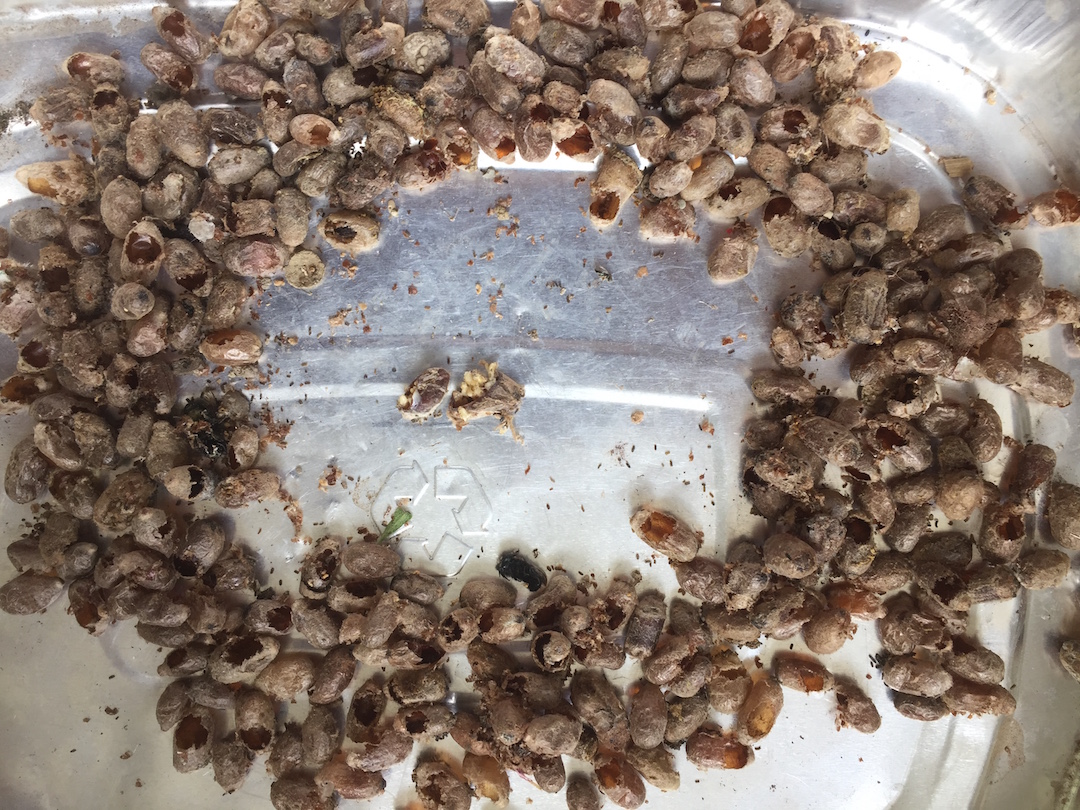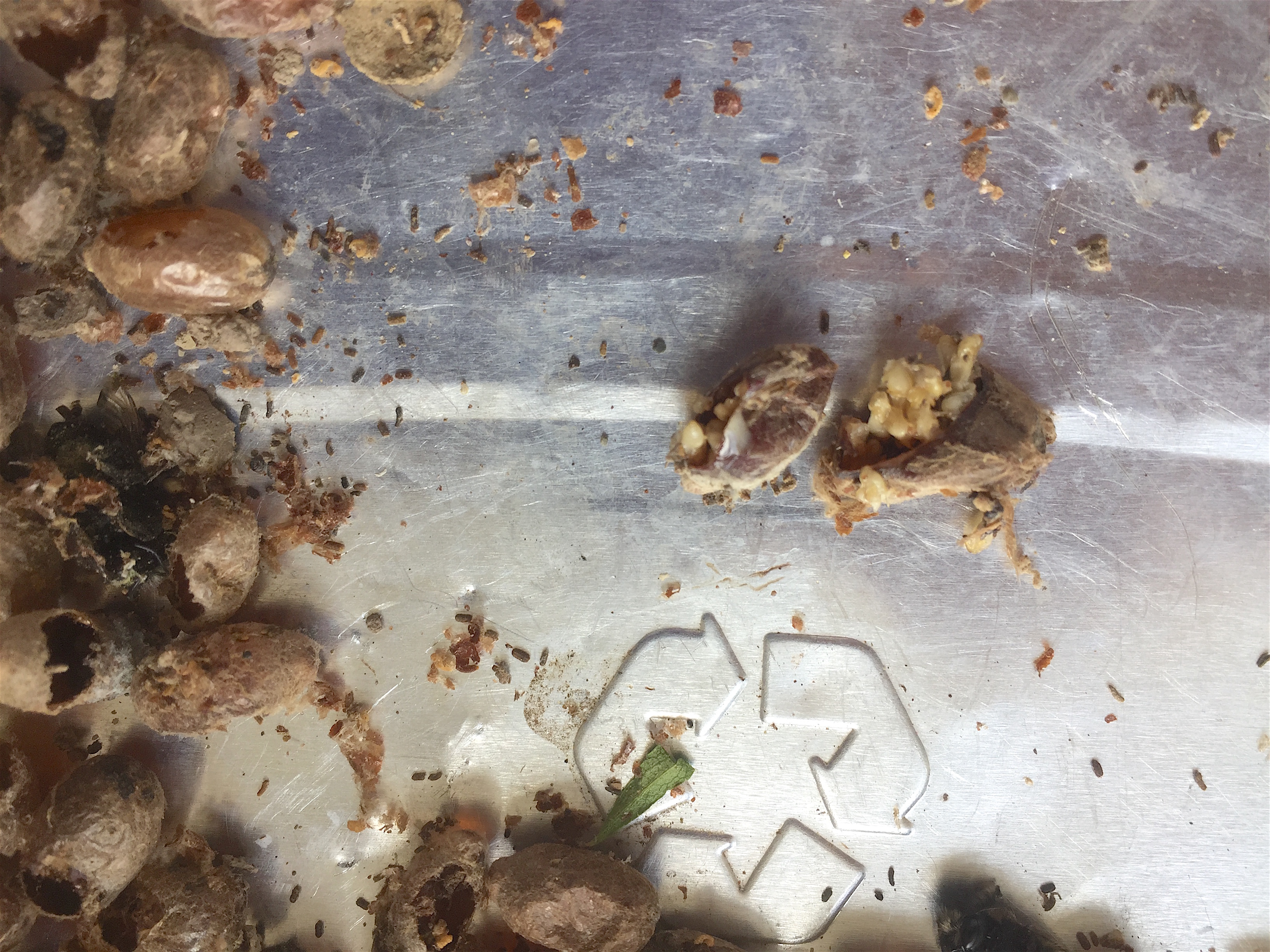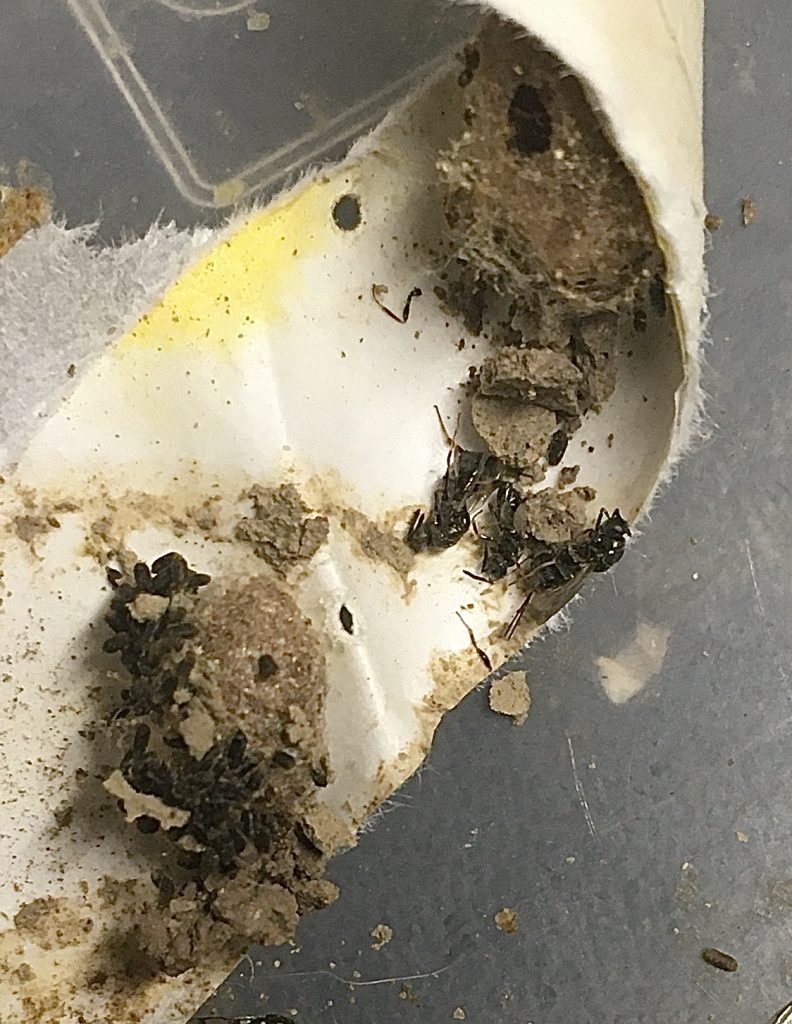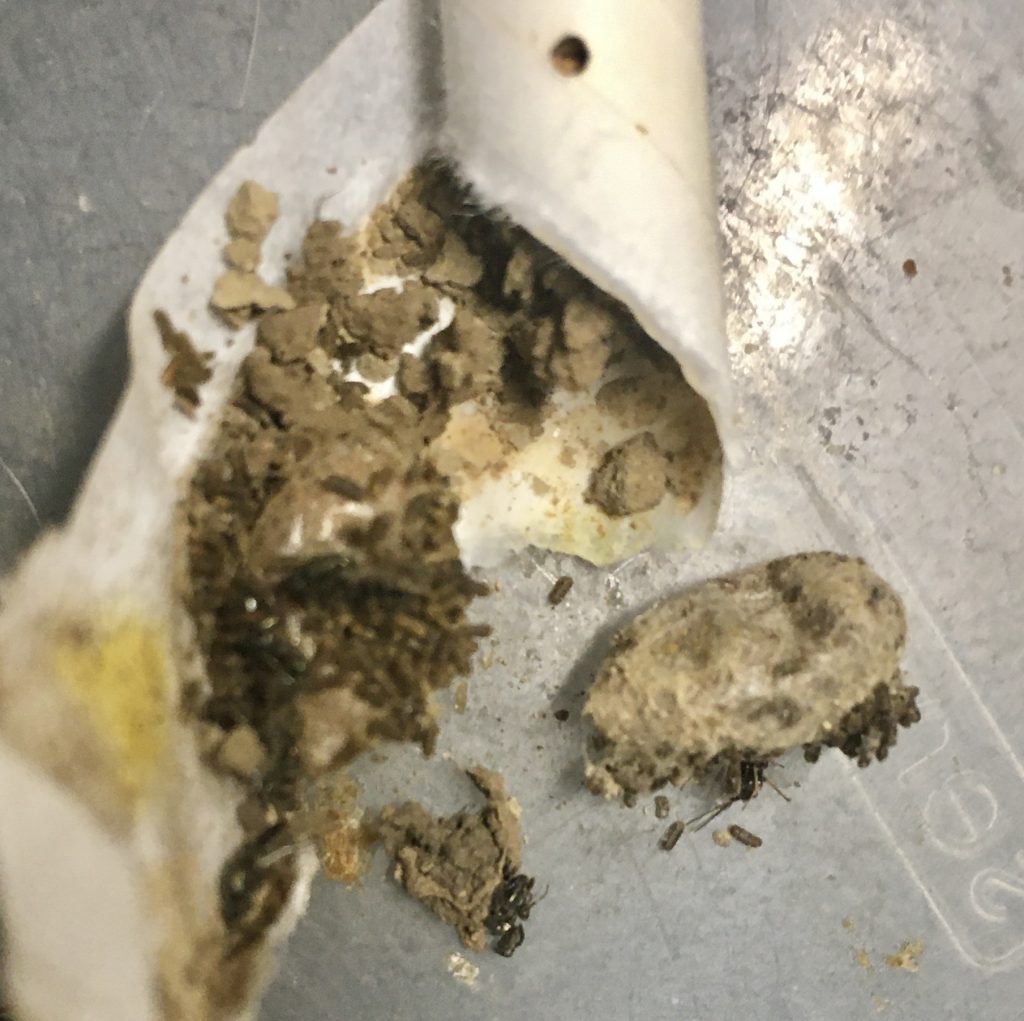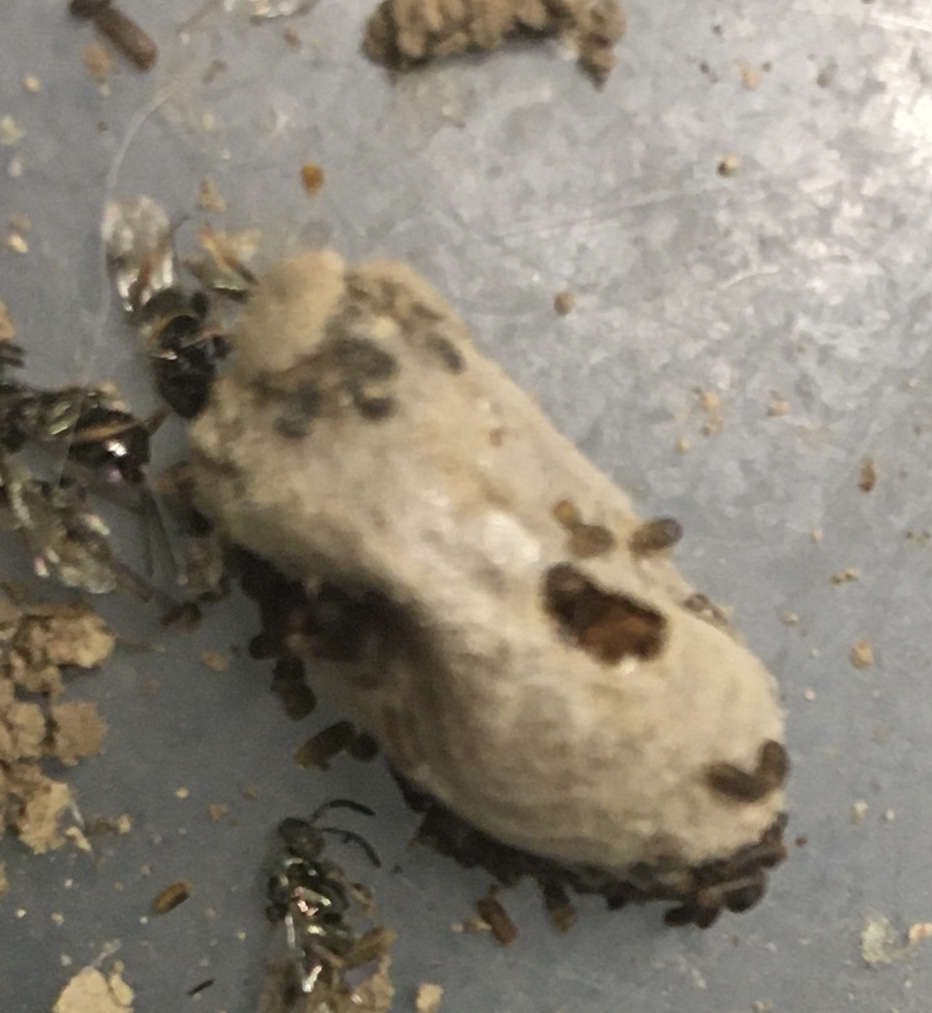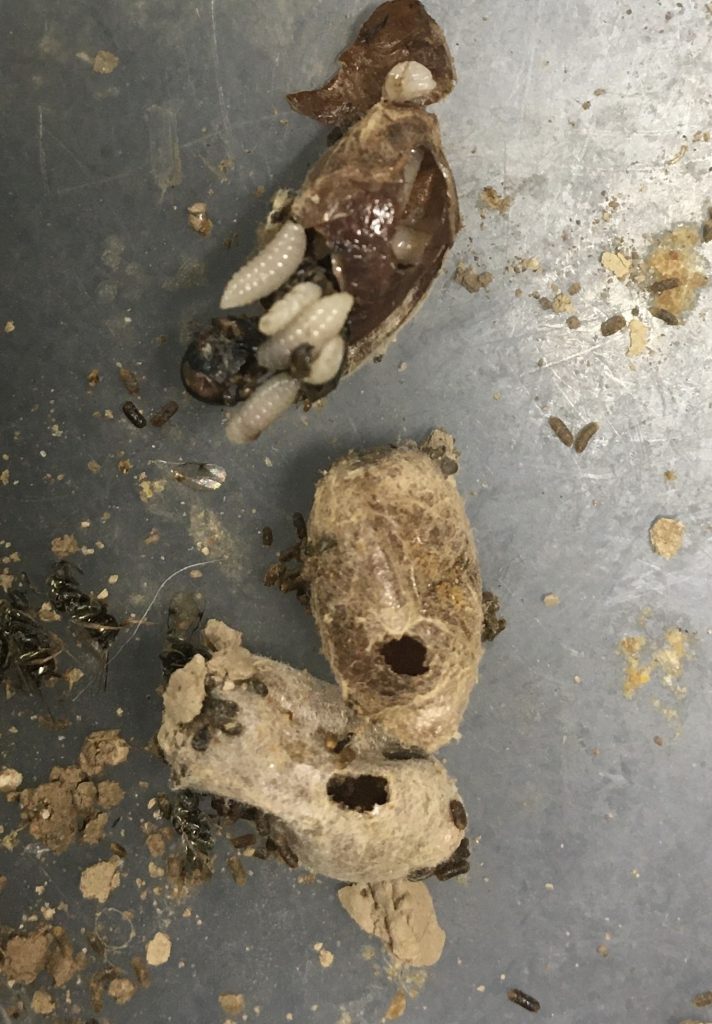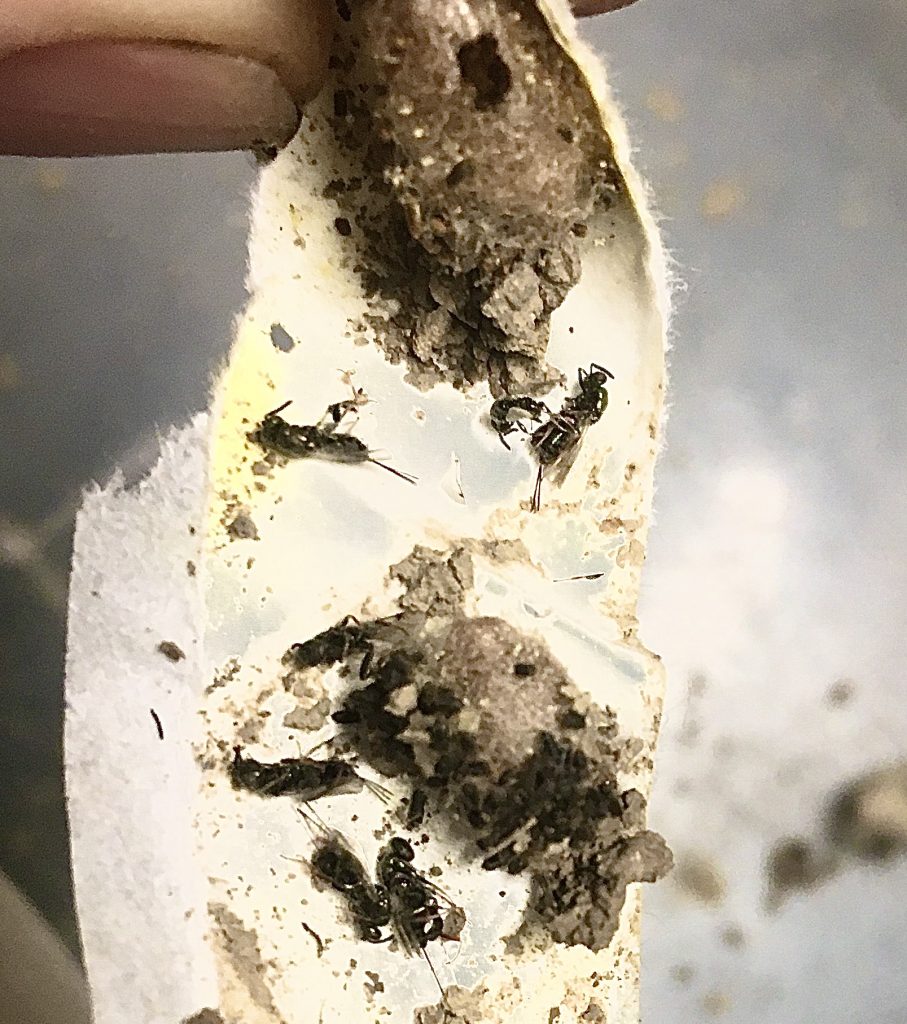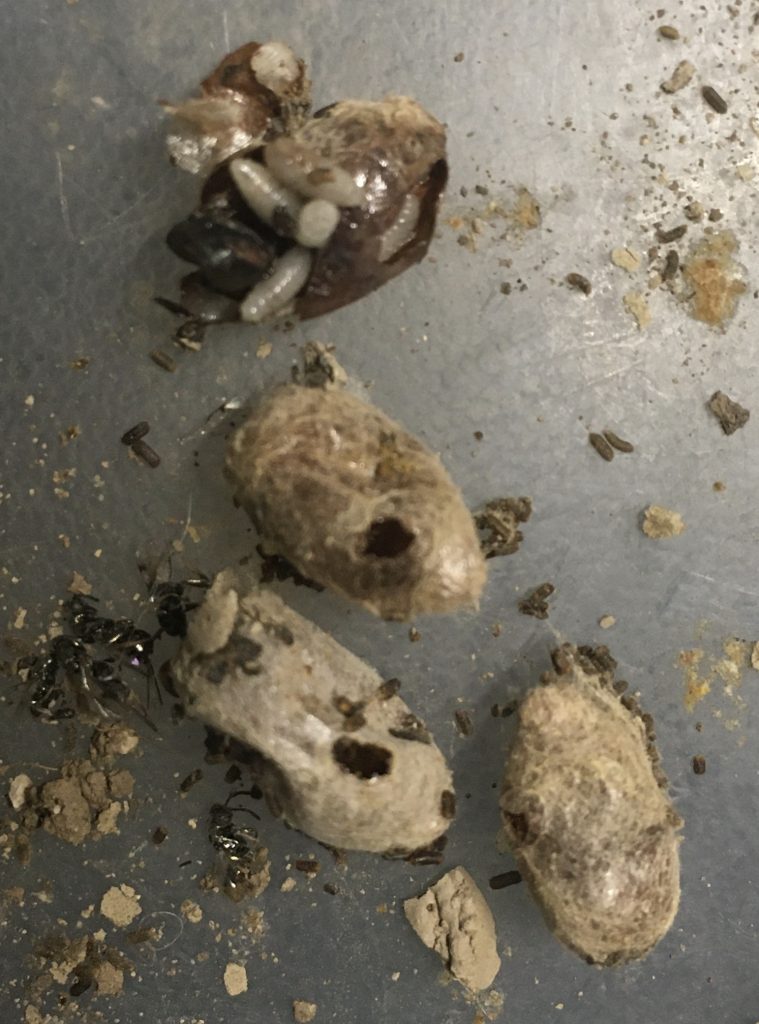A few weeks after your mason bee cocoons have hatched, remove the empty cocoons and any that have not opened and destroy them. In some of the unopened ones you might find the tiny larva of the parasitic mono wasp, referenced here on an earlier post.
Tag: mason bee parasites
Why Cleaning Mason Bee tubes after November is Important
NOTE: I have updated this 2016 post in order to make it appear closer to the other mason bee information
Today I came across two unopened reed tubes which I had forgotten in the refrigerator so the cocoons had not hatched out. The image below shows why it is important to clean your tubes out in the winter and not leave them until late spring.
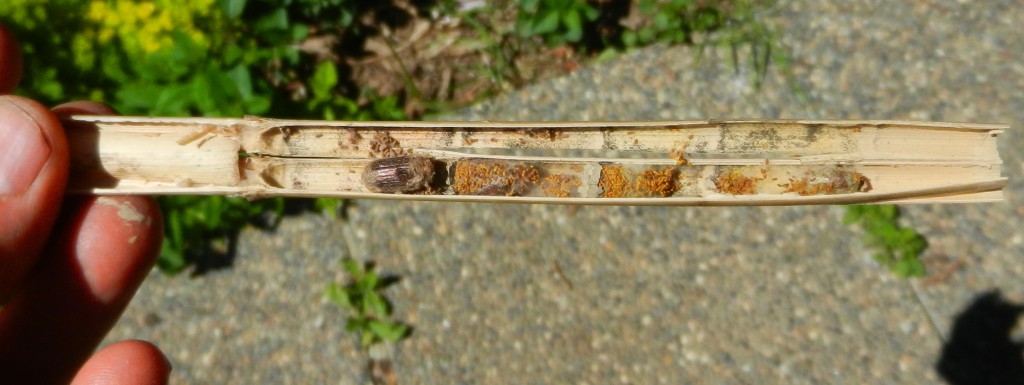
If people leave mason bee homes out unattended from year to year, the parasite population expands . They wouldn’t be so successful in the wild where mason bee nests are more dispersed in holes in wood or under tree bark. . When we provide homes for them however, along with increasing the bee population, we are also multiplying the success of the parasites. So if we are going to encourage bee populations, it is our responsibility to attend to the cocoons in the fall or winter to be sure they are not contaminated with a new generation of mites.
Beware of Tubes through which Parasites can Bore
I have experimented for a few years with a kind of plasticized paper tube someone gave to me which were promoted as mason bee home tubes. This year when removing the cocoons from the tubes I noticed small black dots (holes) in two of the tubes which had been mixed in with the phragmites tubes in the nest box . they were suspiciously drilled at very regular intervals, in fact the distance that cocoons are apart.
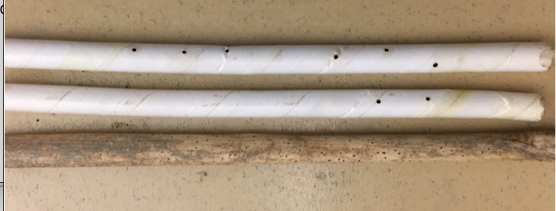
Sure enough, when I opened these tubes, the cocoon which had occupied the spaces beneath the holes did not contain live bees, but instead they were cocoon hulls containing 6-10 live white mono wasp larvae , or hulls with holes and outside of them dead mature mono wasps. Here are a few pictures taken when I was opening the tubes: I had never before seen an example where all cocoons in the same tube had been parasitised like this .
Phragmites reed grass tubes are resistant to the penetration by wasps, so thats one reason they are considered to be superior .
(See https://masonbeesforsale.com/choosing-nesting-materials/) . QUOTE: ” pros: Phragmite Reeds are by far our top choice in nesting materials! They are the best option for several reasons,
1- Size/Shape-Reed tubes naturally vary in size, bees also vary in size and preferences so most bees will find a size they like to nest in. Each tube is cut between nodes so there is a natural back wall. Solitary bees prefer a fully enclosed space to nest in.
2-Protection-They are pest resistant. Mites and parasites aren’t able to burrow through the sides/backs of the tubes.
3-Waterproof– Water will not soften or ruin the tubes. phragmite reeds will naturally wick away moisture. This also decreases the risk of mold, fungus and mildew affecting the bees.
4-Sustainable-Each reed is hand cut to the ideal length (approx. 6inches) from natural sources. Cutting reeds is more environmentally friendly than the burning that usually takes place to get rid of the reeds.
5-Easy Sorting– At the end of the season the reed tubes can easily be split in half. Bees can easily be sorted without damaging the cacoons.
cons:
1- Disposable-Reeds need to be replaced after each season, this requires purchasing new tubes. Luckily they are affordable.
2- Predators– Squirrels and Raccoons are sometimes able to get the tubes out of the bee house if not packed tightly enough. Placing some chicken wire over the front of the bee house and packing the reed tubes tightly in the house will prevent predators from getting your bees. “
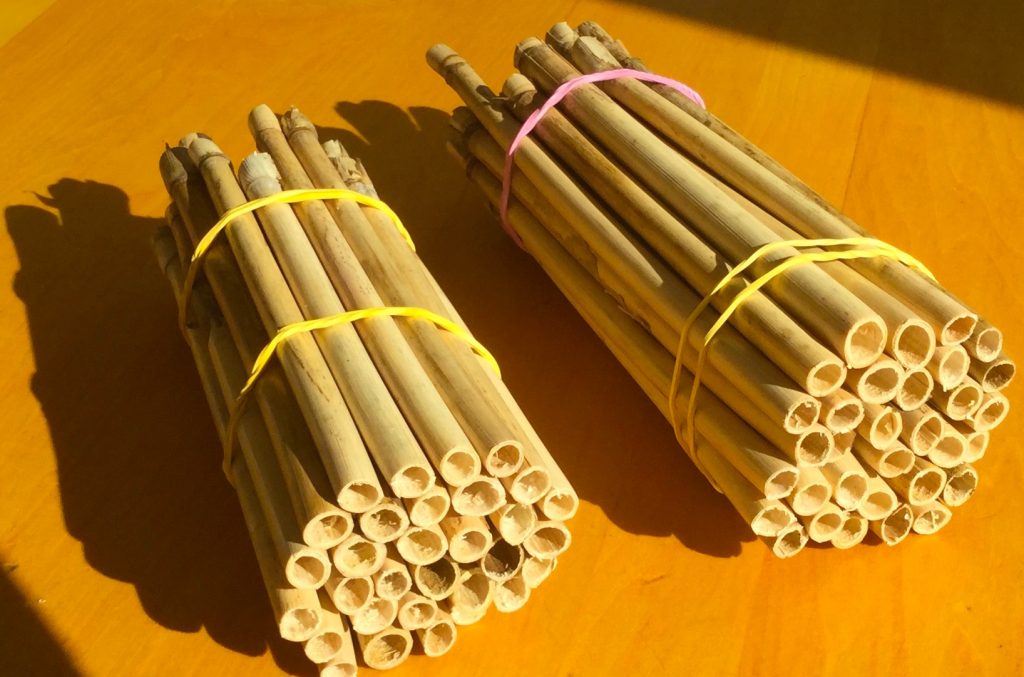
here are some links for various species of parasitic wasp
chalcid wasp predator video: https://www.youtube.com/watch?v=hL6uWSc6rK0
